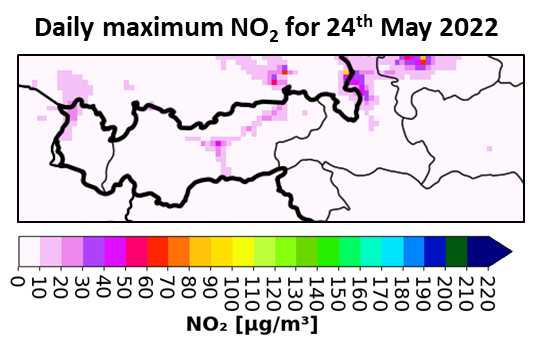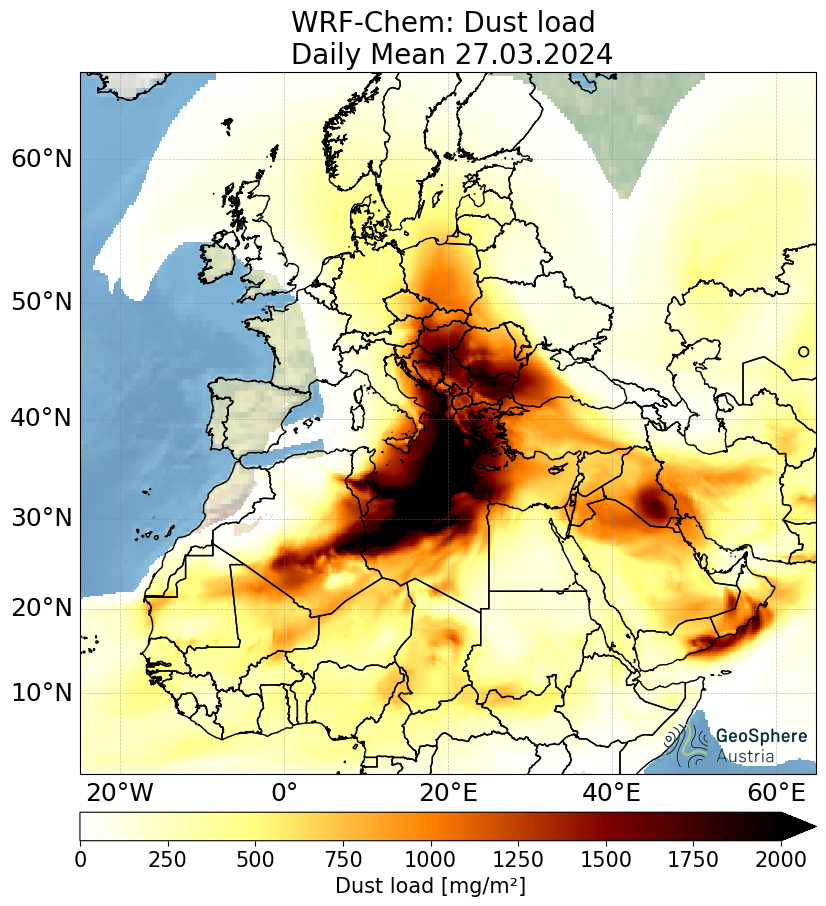Working group on Atmospheric Chemistry
The TEAMx working group on Atmospheric Chemistry, currently led by Giacomo Gerosa (Catholic University of the Sacred Heart of Brescia) and Marcus Hirtl (GeoSphere), has 65 members from 10 countries.
The interplay between dynamical effects and a diverse precursor mix of ozone and aerosol-forming compounds makes atmospheric chemistry in mountainous regions highly complex. Various aspects of atmospheric transport and atmospheric chemistry will be addressed by this working group. Applications range from local scale dispersion in complex terrain up to regional scale and long range transport as well as stratosphere-troposphere exchanges considering different complexities in gas- and aerosol chemistry parameterizations.
Near-surface emissions, both natural and anthropogenic, depend on near-source chemical transformations, which are in turn affected by transport and exchange processes. For example, heavy aerosol pollution events are sporadically observed due to horizontal advection of air masses into narrow valleys. Observational studies usually find significant spatial variation of air pollutants in Alpine valleys. However, dispersion modeling is a challenging task, as there are many uncertainties associated with the emissions and meteorology, as well as physical and chemical parameterizations. It has recently been found that high emissions of anthropogenic nitrogen oxides in the Alps seem to be underrepresented in emission inventories. Another emerging topic is the production of ultrafine secondary aerosols (SOA) in mountainous regions: it has recently been suggested that under certain conditions mountains can act as a source of SOA.
Transport between the troposphere and stratosphere is thought mainly to occur due to flow within mid-latitude frontal systems and from large convective systems. Observational studies have highlighted the potential for breaking gravity waves, induced by flow over mountainous terrain, to also lead to rapid mixing between air masses. This potentially provides an additional, and essentially unquantified, route to mixing air between the troposphere and stratosphere. Most models (unless run at a very high spatial resolution) do not explicitly resolve convective overturning due to gravity wave breaking.
The following general research topics related to atmospheric chemistry have been identified:
- New observations of the chemical composition of the atmosphere above mountainous terrain should be conducted to improve the understanding of the interaction between dynamics and chemistrY.
- A better understanding of sources and chemical processing of aerosols and their precursors should be developed through the planning of targeted field studies.
- Chemical remote sensing and regional atmospheric models approach the spatial scales needed to resolve important processes in complex topography – these will help to develop appropriate parameterizations for large scale models.
- Long-term chemical atmospheric observations in the Alps should address significant gaps in the evolution of air pollution sources.
- New observations of the chemical composition within breaking mountain induced gravity waves should be obtained to allow case studies to be developed.
- Turbulent transport of chemical tracers induced by breaking gravity waves should be parameterized in chemical transport models.
- High-resolution atmospheric models coupled with Lagrangian Particle Dispersion Models (LPDM) are currently the most appropriate tool to simulate pollutant dispersion. Application over complex terrain requires good-quality mean flow and turbulence fields from the meteorological component, as well as a LPDM that accounts for horizontal exchange.
- Further research on practical ways to represent the fate of reactive tracers in LPDM is necessary.
Based on these topical areas the two specific main research questions will be addressed in more detail:
- Assessment of model ability to reproduce ozone distribution in the Inn-valley
Different gas-phase chemistry options are implemented in CTMs. The proper knowledge of pre-cursor emissions and the complex flow around and over terrain must be simulated properly. In complex terrain the model resolution (horizontal and vertical) is an important factor that limits also the performance of the model. What model resolution is needed to reproduce the ozone (and its precursor) distribution in the valley?

- Modelling of Saharan dust events transport over the alps
Depending on the large-scale weather conditions, Saharan dust can be transported several times per year towards central Europe and over the alpine region. Special atmospheric conditions can lead to a down mixing of dust reaching also surface levels and impact human health. We will use the comprehensive observational data that will be made available during the TEAMx measurement campaign, to investigate if and how good state of the art chemical transport models can simulate the large scale flow over alps vs. down-mixing e.g. during Saharan dust events.

